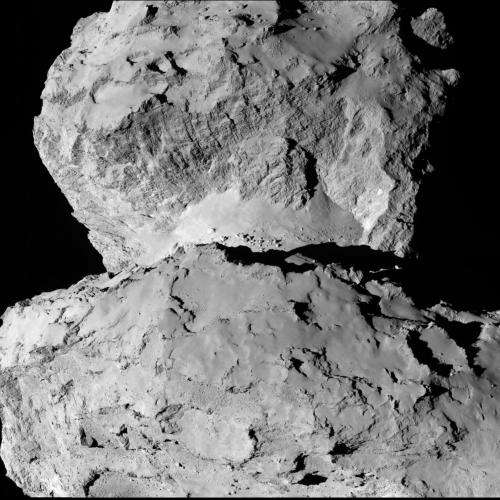Image: Rosetta spies comet surface variations

A new image of comet 67P/Churyumov-Gerasimenko shows the diversity of surface structures on the comet's nucleus. It was taken by the Rosetta spacecraft's OSIRIS narrow-angle camera on August 7, 2014. At the time, the spacecraft was 65 miles (104 kilometers) away from the 2.5-mile-wide (4-kilometer) nucleus.
In the image, the comet's head (in the top half of the image) exhibits parallel linear features that resemble cliffs, and its neck displays scattered boulders on a relatively smooth, slumping surface. In comparison, the comet's body (lower half of the image) seems to exhibit a multi-variable terrain with peaks and valleys, and both smooth and rough topographic features.
A 3-D version of the image depicting the comet is available at:
Launched in March 2004, Rosetta was reactivated in January 2014 after a record 957 days in hibernation. Composed of an orbiter and lander, Rosetta's objectives are to study comet 67P/Churyumov-Gerasimenko up close in unprecedented detail, prepare for landing a probe on the comet's nucleus in November, and track its changes as it sweeps past the sun.
Provided by NASA





















